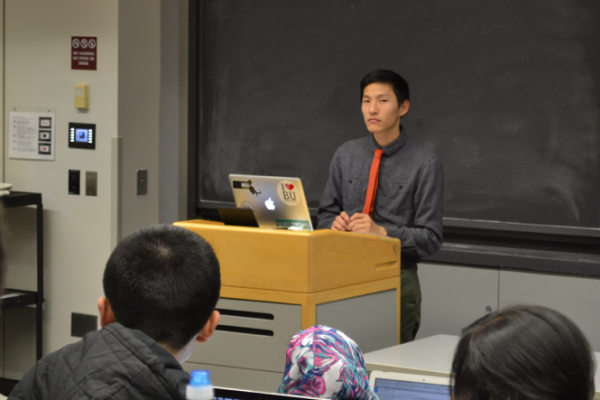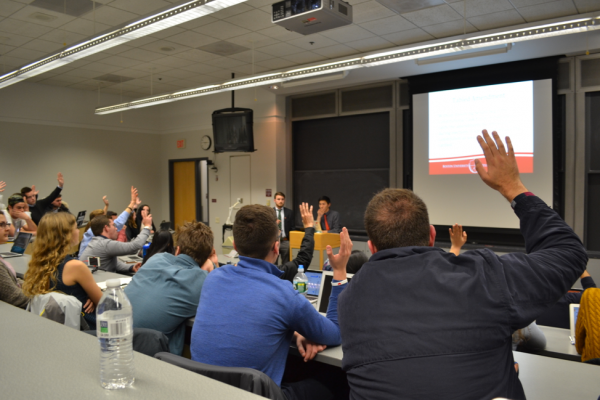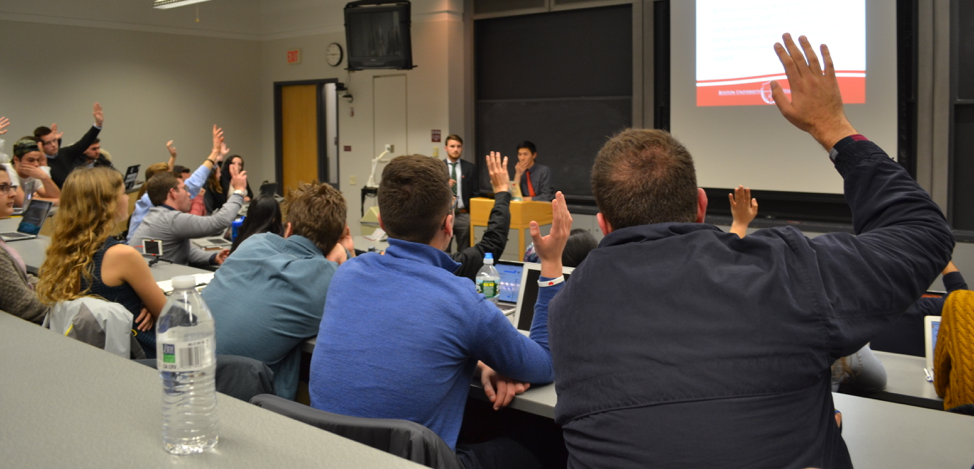
On Monday night, the tabled proposal to dissolve the student senate and create a new constitution was voted down almost unanimously after student body president, Andrew Cho (CAS ’16), presented a new proposal designed to address the issues in student government through a reform committee.
Cho presented a letter to the student body acknowledging mistakes made in the impeachment process of Marwa Sayed and Kimberly Barzola. Cho also said he promised to “work towards a reformed system to restore the legitimacy and efficacy of our student government.”
Cho acknowledged that there are issues within student government and presented his proposal for a constitutional reform committee. The plan called for a new committee, open to all students, that would create an amendment to the Student Government constitution, with the intent of fixing any problems of representation that may exist in the current student government.
Cho would run the committee, assisted by the executive board, facilitating the meetings and the process of creating the amendment. Members of the committee would be appointed as “rapporteurs” to maintain transparency by reporting public input and publishing proceedings online. Any student willing to come to a majority of the meetings would be able to apply to be in the committee.
The proposal is set up to assure transparency. This is an important aspect of the proposal which seems to stem from transparency issues during the impeachment trials. Students were upset after the impeachment trials that they were told to leave during portions of the discussion and voting. This proposal seems to be a turn towards complete transparency.
The completed amendment, created by the committee, would need to be approved by the student body by a two-thirds vote in a referendum alongside the election of the executive board, to be implemented in the fall of 2016.
The proposal was amended by senate, after several senators voiced concerns, to ensure that the committee could only present one version of an amended constitution to make sure the proposed amendment had a fair chance of getting a two-thirds vote for ratification.
After a motion to vote, the senate first voted down the original proposal to dissolve senate and create a task force. This vote meant that senate was not dissolved and the current constitution would not be immediately thrown out. Then the senate approved Cho’s proposal for a constitutional reform committee with a large majority.

Cho’s proposal for the most part was not much different than the previous proposal to dissolve the senate. Both proposals called for the creation of an independent committee, open to all students, with the responsibility of making changes to the senate that would improve student representation.
The difference is that Cho’s proposal does not dissolve the senate. This allows senate initiatives to continue and does not make senate’s existence dependent on the ratification of a new constitution.
Cho, like most of the senators, wants senate to exist. On the other hand, many frustrated students want senate to be dismantled, like Diana Abbas (CAS ’18). She said after the proposal to dissolve senate was initially tabled, she “hope[d] to see senate dissolved.” She said the “student government does not represent me” and is therefore illegitimate. This proposal was an attempt to bridge that gap of misrepresentation.
Many of the outspoken students who wanted the senate dissolved cheered when this new proposal was passed, seeing it as an opportunity to make changes. Other students were less enthusiastic.
“As an outsider to Student Government I don’t understand why the amendment process that is implemented in the current constitution is not being considered as an option to modify the constitution” said Ian Wind (CAS ’19), a student attending the meeting.
Others agreed in thinking this proposal was still too drastic and unnecessary. Although there were people dissatisfied, this is the first time the most active students protesting the misrepresentation of the student body approved a senate action.
Cho’s proposal was a compromise that was able to bring together two sides: one that believes student government fails to represent the student body, and another side that wants the government to continue to function and implement positive initiatives. The next step for student government will be to try to engage the student body and build the reform committee.




